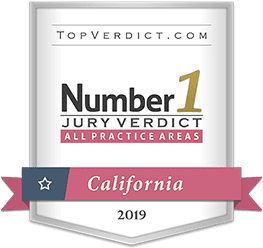
Instructions for Letters to Your Insurance Company
General Instructions
Your attorneys have drafted a series of sample letters that you can use to begin the insurance claims process and address the most common issues that arise early in your claim. There are five sample letters you can use:
- Letter A: Initial Proof of Loss and Notice to the Insurance Company (the first letter to your insurance company notifies the company of your loss and makes early requests for additional living expenses). PDF
- Letter B: Request for Advance of Additional Living Expenses (this letter asks your insurance company to advance you four months of additional living expenses, so you can secure and pay for alternative housing). PDF
- Letter C: Request for Payment of Interim Additional Living Expenses (this letter requests payment of additional living expenses already incurred by you in the event the insurance company refuses to issue an advance). PDF
- Letter D: Request for Advance on Personal Property Coverage (this letter asks your insurance company to advance you 25% of your personal property coverage). PDF
- Letter E: Request for Partial Payment of Personal Property Loss (this letter requests a partial payment for your personal property losses in the event the insurance company refuses to issue an advance). PDF
Please read the letters. The purpose of each letter should be self-explanatory. As you complete the letters, please keep the following in mind:
- Certain sections or sentences that require you to make editing choices or insert information are highlighted in yellow. It is possible that not every highlighted section will apply to you. Also, you may not have some of the information requested. Edit the letter to make it apply to your situation.
- Letters C and E require you to provide additional documentation. For letter C you will need to provide a partial list of your additional living expenses, which are defined below. For letter E you will need to provide a partial list of your property losses. You can find a generic inventory form to use, here.
- Throughout the letters, certain defined terms are used. These defined terms appear in bold/italic type and are described below. Whenever one of these terms is used in the letters, please insert the requested information. As explained below, most of this information can be obtained from your Declarations Page.
Defined Terms

MEET OUR TEAM
A TRADITION OF SUCCESS

-
 R. Brent Wisner Attorney, Managing PartnerRead Bio
R. Brent Wisner Attorney, Managing PartnerRead BioR. Brent Wisner is the managing partner of Wisner Baum and is based at our San Francisco Bay Area office. Brent is driven by a deep-rooted passion for using the law to help those who have been marginalized and hurt by large, and sometimes malicious, corporations.
-
 Michael Baum Attorney, Senior PartnerRead Bio
Michael Baum Attorney, Senior PartnerRead BioMichael L. Baum is a senior partner of Wisner Baum (formerly Baum Hedlund Aristei & Goldman) with nearly 40 years of experience. He was the managing partner of Baum Hedlund from 1993 to 2022 and proudly turned over the reins to R. Brent Wisner in January of 2023.
-
 Bijan Esfandiari Attorney, Senior PartnerRead Bio
Bijan Esfandiari Attorney, Senior PartnerRead BioBijan Esfandiari is a pharmaceutical product liability litigation attorney and senior partner at Wisner Baum in Los Angeles. Since joining the firm in 2007, Bijan has worked as lead counsel on several cutting-edge pharmaceutical and medical device cases.
-
 Timothy Loranger Attorney, Senior Partner, Pilot, Marine Corps VeteranRead Bio
Timothy Loranger Attorney, Senior Partner, Pilot, Marine Corps VeteranRead BioTimothy A. Loranger is an attorney and senior partner at the national mass disaster law firm of Wisner Baum. A consumer attorney, pilot, and avid citizen advocate.


-
Building RelationshipsWe take pride in our professional relationships with referring attorneys and are equipped with the resources to take on your complex case.
-
Track Record of SuccessWe have resolved thousands of cases worldwide, winning over $4 billion in verdicts and settlements on behalf of clients.
-
Free & Confidential ConsultationsInterested in exploring your legal rights? Schedule a free consultation with our team. You won't pay unless we win your case.







.2108160751143.png)







[1].2010071012471.png)
